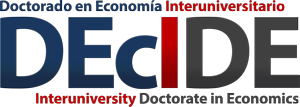Tourism distribution at competing destinations: Mobility changes and relocation
- Referencia: Albaladejo, I.P., Arnaldos, F. y Martínez-García, M.P.: “Tourism distribution at competing destinations: Mobility changes and relocation”. 2022, Tourism Economics, 0(0): 1-23. DOI: https://doi.org/10.1177/13548166221138991
Abstract
We present a dynamic model of competing destinations to study the agglomeration and dispersion forces driving long-run geographical distribution of tourism. The relative strength of these forces determines whether tourism is agglomerated at one destination or is more disperse. Economies of scale in the tourism industry favour agglomeration while tourists’ preference for local tourist attractions and local services is conducive to dispersion. If returns to scale approach constant and tourists do not appreciate local goods, the interaction between the two destinations disappears and our model converges to the well-known Tourism Area Life Cycle model. By contrast, if destinations interact and the price sensitivity of tourists is low enough to offset the economies of scale that induce firms to agglomerate, the sharing of tourism between the two destinations is stable. Otherwise, tourism tends to agglomerate in one destination. Tourism policies interfere with the agglomeration and dispersion forces and could induce tourist relocation. We calibrate the model with real data before and after the restrictions in force during the pandemic in 2021 and those derived from the war in Ukraine.

